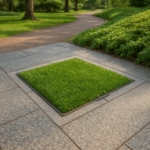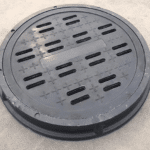Japan’s artistic manhole covers are a unique symbol of urban beautification and cultural heritage. They are not only part of the city’s infrastructure, but also a carrier of local culture and art.
Origin and early development
The origin of artistic manhole covers in Japan can be traced back to the 1980s. At that time, the Japanese government launched a “city beautification” plan to enhance the city’s image by improving urban infrastructure. Manhole covers, as a common but inconspicuous part of the city, were included in the scope of this plan.
The earliest artistic manhole cover designs were mainly based on local characteristics. Each region designed a unique manhole cover pattern based on its own history, culture and natural landscape. This not only increased the beauty of the manhole cover, but also played a role in promoting local culture. For example, manhole covers in Hokkaido may have patterns of ice and snow and Hokkaido dogs, while manhole covers in Kyoto may display temples and cherry blossoms.
Manifestation of local characteristics
The design of artistic manhole covers in various parts of Japan is often closely integrated with local characteristics. For example, manhole covers in Okinawa may have patterns of marine life and traditional dances, while manhole covers in Tokyo may display modern architecture and technological elements. This kind of design adapted to local conditions makes each manhole cover unique and full of local characteristics.
Art manhole covers are not only an expression of aesthetics, but also a part of cultural heritage. Through these manhole covers, residents and tourists can more intuitively feel the local historical and cultural background and enhance their sense of identity with local culture. For example, in Nara City, the common pattern on manhole covers is deer, which is closely related to the deer in Nara Park and reflects the unique local cultural landscape.
Social participation and community cohesion
Local residents and artists are usually invited to participate in the design and production process of artistic manhole covers. This extensive participation not only enhances community cohesion, but also enhances residents’ concern and sense of responsibility for the urban environment. For example, in some cities, manhole cover design competitions have become part of community activities, and residents choose their favorite designs by voting.
Artistic value and visual beauty
Art manhole covers not only have practical functions, but their aesthetic value cannot be ignored. Exquisite patterns and rich colors add a unique landscape to the city, making the monotonous streets lively and interesting. For example, in Yokohama City, colorful manhole covers not only beautify the streets, but also attract many photography enthusiasts to take pictures and check in.
Government support and policy promotion
The Japanese government has given strong support to the promotion and popularization of art manhole covers. Through policy guidance and financial support, the government encourages various places to carry out manhole cover art design competitions and exhibitions to stimulate creative enthusiasm. For example, the government has set up a special fund to support the design and production of art manhole covers.
Media publicity and social impact
With the spread of social media, photos and stories of art manhole covers spread rapidly, attracting more people’s attention and participation. Many people further expanded the popularity and influence of art manhole covers by sharing and liking them. For example, there are many posts and tags about art manhole covers on Instagram and Twitter, which attract the attention of users around the world.
Economic effect and tourism promotion
Art manhole covers have become a tourist business card for many cities, attracting a large number of tourists to come and watch and take pictures. This has not only driven the development of tourism, but also promoted the prosperity of related industries, such as catering, accommodation and souvenir sales. For example, some cities have launched the “Manhole Cover Tour”, which has attracted a large number of domestic and foreign tourists.





